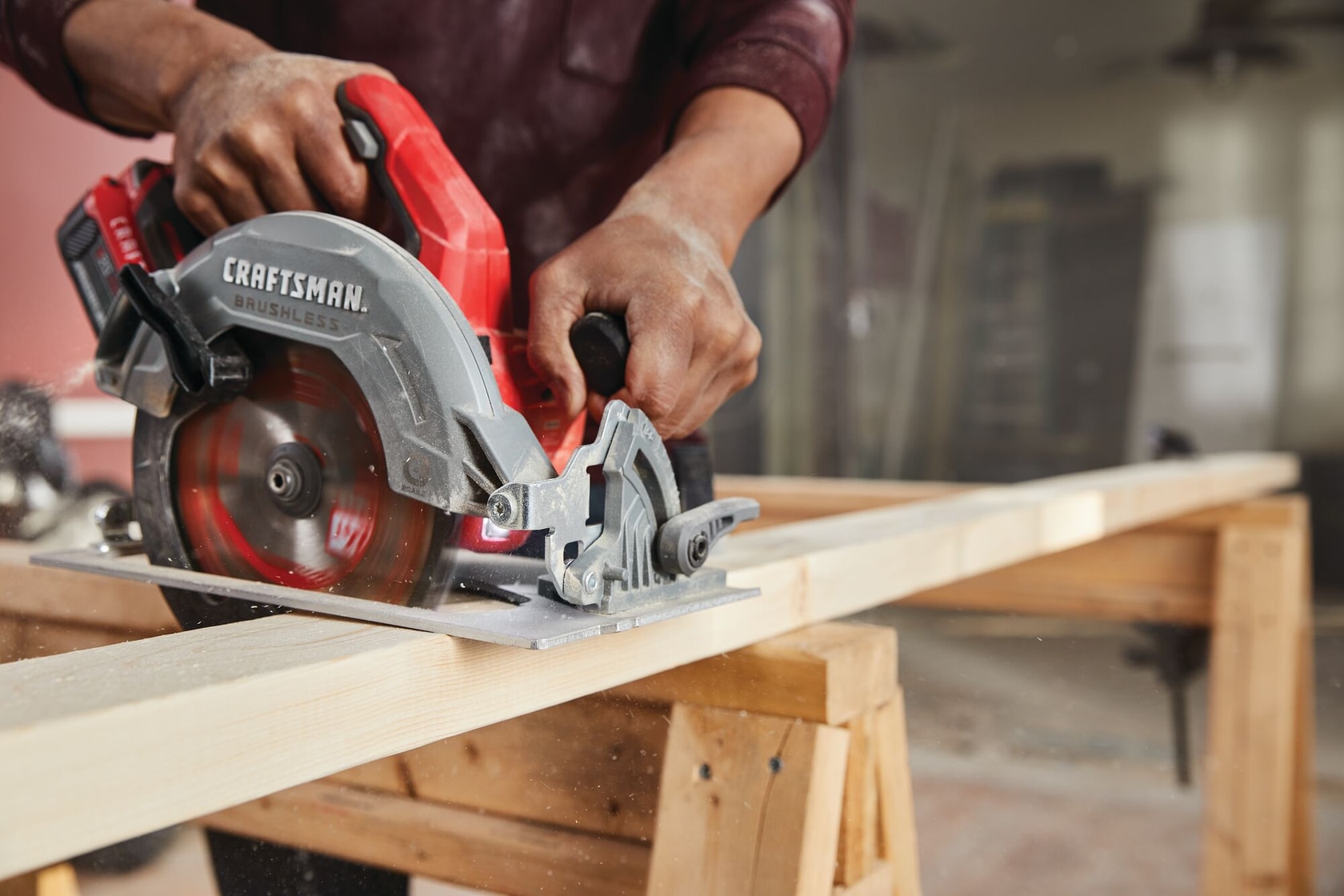- FAQs
Circular Saws frequently asked questions
Answers to commonly asked questions


Be sure to checkout the full line of CRAFTSMAN® Circular Saws HERE
What are some uses for a circular saw?
Circular saws are versatile power tools useful for a variety of cutting tasks. Some common uses for circular saws include:
CUTTING LUMBER: Circular saws are efficient and versatile tools for cutting lumber or plywood.
CUTTING SHEET GOODS: Circular saws are also great for cutting large sheet goods like plywood or MDF to size for projects like built-in bookshelves or cabinets.
CROSSCUTTING: Use a circular saw to make crosscuts across the grain of a piece of wood, such as when cutting a board to length.
RIPPING: Use a circular saw to make rip cuts along the length of a board, such as when cutting a board down to a narrower width.
BEVEL CUTS: Many circular saws can make bevel or angled cuts to create decorative edges or fitting pieces together
TRIMMING DOORS OR BASEBOARDS: Use circular saws to trim doors or baseboards to fit.

What can you cut with a circular saw?
Use a circular saw to cut a wide variety of materials, including:
WOOD: Circular saws are used to cut lumber, plywood, and other types of wood.
FLOORING: Use a circular saw to cut flooring materials like laminate or hardwood.
What are the different types of circular saw blades?
Several types of circular saw blades are best for specific applications. Here are some common types:
RIP BLADES: These blades are designed for cutting along the wood grain and have fewer teeth than other blades.
CROSSCUT BLADES: These blades cut across the grain of the wood and have more teeth than rip blades.
COMBINATION BLADES: These blades are for ripping and crosscutting and have a combination of teeth that can handle both tasks.
PLYWOOD BLADES: These blades have a high tooth count for cutting thin veneers and plywood.
What are the different sizes of circular saws?
Circular saws are available in different blade diameters. The most common sizes of circular saws are:
7 1/4 inch: This is the most popular circular saw blade diameter and suitable for most cutting tasks, including cutting lumber and sheet goods.
6 1/2 inch: These saws are smaller and lighter than 7 1/4 inch saws, making them easier to maneuver. They can take on much of the cutting applications of a 7 1/4 inch saw, but can also handle lighter tasks such as cutting trim and molding.
5 3/8 inch: These saws are smaller and lighter than 6 1/2 inch saws, making them easier to maneuver in tight spaces. 5 3/8 inch blades are ideal for light-duty cutting tasks.
10 1/4 inch: These saws are larger and heavier than 7 1/4 inch saws and used for heavy-duty cutting tasks, such as cutting thick lumber or sheet goods.
4 1/2 inch: The smallest circular saws are ideal for light-duty cutting tasks, such as cutting thin boards or sheet goods.
The size of the circular saw you choose will depend on the types of cutting tasks. A 7 1/4-inch saw is the most versatile and suitable for most tasks, while larger and smaller saws are better suited for specific cutting tasks or when working in tight spaces.
Reinventing How-To

DIY kids playroom tutorial
Follow along with Nik & Liv’s step-by-step guide to create to coolest kid’s playroom space with the help of CRAFTSMAN® tools.

